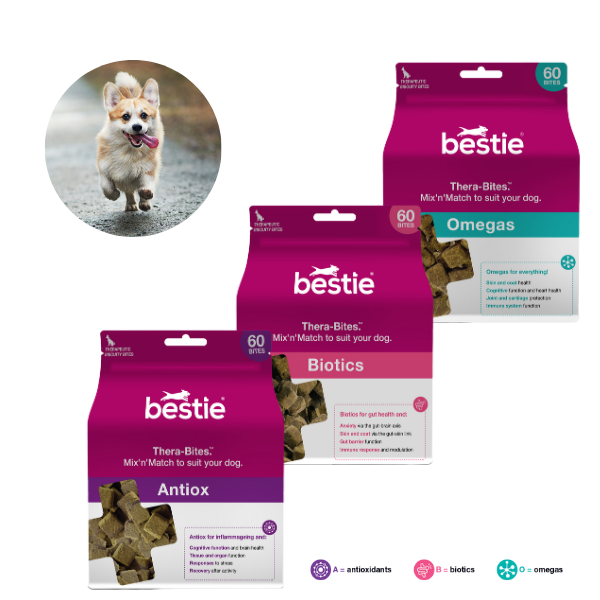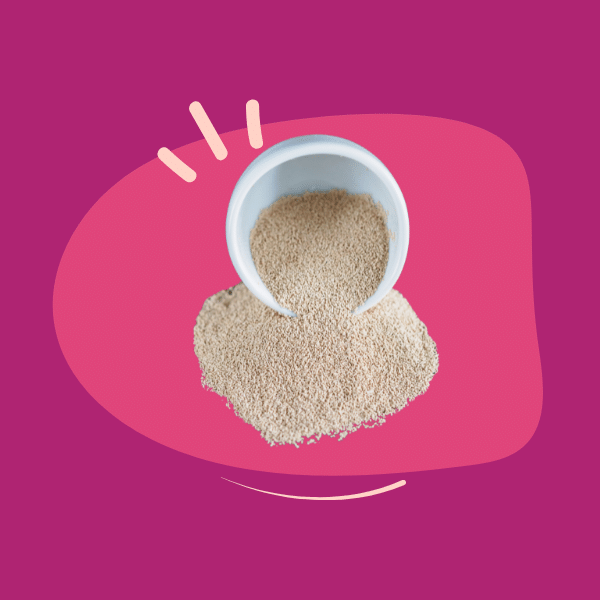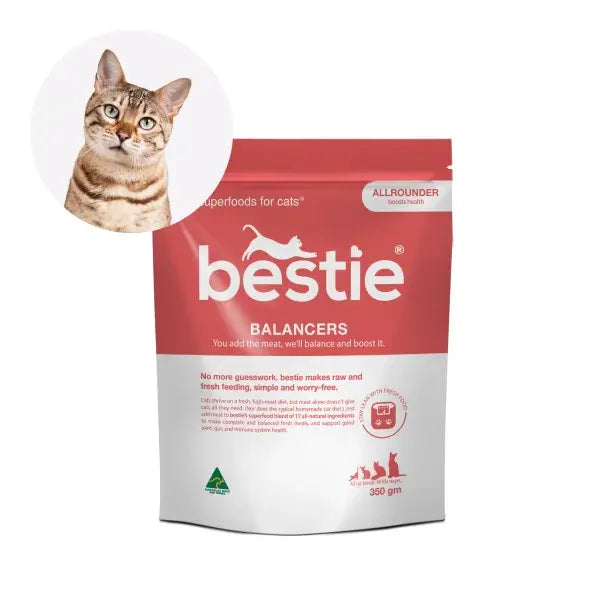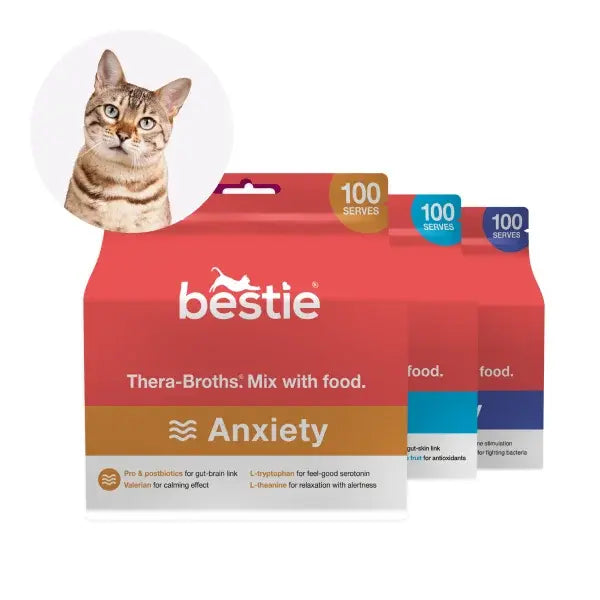It’s no surprise that vegan diets have entered the world of pet foods. What began as an alternative and sustainable way of eating for people, is now being adopted - ot considered at least - for dogs.
That being said, is vegan pet food healthy for your cats and dogs?
Let’s find out!
Comparing the digestive systems of cats and dogs
No single diet caters to all pets. This is especially true when we compare cats and dogs, but even every pet has different nutritional requirements depending on their age and breed. Let’s briefly cover the differences between the digestive systems of cats and dogs to give us a better understanding.
Carnivore vs Omnivore
Cats are obligate carnivores who rely on a meat-based diet to satisfy their nutritional needs. Their bodies have adapted over centuries to meat and developed in a way that prioritises protein digestion. This means cats have increased stomach acidity, a shorter digestive tract, and a different gut microbiome than dogs¹.
On the other hand, dogs are omnivores. They are scavengers that can take nutrients from meat or plant-based diets, meaning dogs can survive on a plant-based diet. Their longer digestive tract allows them to break down complex plant fibres and use essential nutrients found in plants.
Taurine in vegan diets
Perhaps the main difference is related to amino acid requirements between cats and dogs. The amino acid taurine isn’t found in plants. While dogs can synthesise taurine from other essential amino acids (like methionine and cysteine), cats don’t have this luxury².
Does this mean cats can’t eat a vegan diet? No.
As long as the diet is complete and balanced for a specific species (e.g., supplementing taurine into a cat’s diet), then the source of proteins, carbohydrates, and fats is largely irrelevant. This means cat food can technically be sourced from either meat or plants!

What’s the difference between nutrients and ingredients?
There might be some confusion between nutrients and ingredients. Your pet needs vitamins, minerals, carbohydrates, proteins, and fats to stay healthy. These are nutrients!
Meanwhile, ingredients are what carry the nutrients. This can be in the form of whole foods that your pet’s digestive system extracts the nutrients from, or direct addition of essential amino acids, vitamins, and minerals that can also be considered both an ingredient and a nutrient.
Sometimes, an ingredient can have inaccessible nutrients for a specific species—for example, complex carbohydrates found in plants. We just described how the longer digestive tract in dogs helps break down plant fibres, but dogs also have double the number of receptors along the intestinal tract to eventually absorb these metabolised sugars³.
Digesting complex carbohydrates from plants would be much more difficult for a cat's shorter and more limited digestive tract. This means a vegan diet for cats and dogs needs to be tailored differently, with cats needing more protein content and readily digestible carbohydrates.
Where these nutrients in your pet’s food come from is less important. As long as it’s digestible, the body recognises nutrients as their biochemical structure and uses them. So, cats and dogs should be able to live healthy lives with a complete and balanced vegan diet.
Supporting vegan diets in pet food: A Protein Study
When we talk about protein, we usually think of meat. A recent study by Hill’s Pet Nutrition compares the digestibility of plant-based proteins to traditional meat protein in diets for both cats and dogs. The study included 226 dogs and 296 cats⁴.
Plant proteins were of similar digestibility to meat proteins for dogs, while for cats digestibility was improved. Some plant proteins like soybean meal, soybean protein isolate, corn gluten meal, and rice protein concentrate worked especially well. We dive deeper into that study and protein itself, in this blog post here.
This is exciting news because it introduces more sustainable protein sources and supports the credibility of vegan diets!
How much protein does your pet need?
There isn’t a perfect answer to this question. Some pets need more dietary protein, while others need less.
Associations that determine pet food standards and nutrient profiles, like FEDIAF and AAFCO, have completed years of research to understand what minimum requirements an animal needs to survive. For instance, without the minimum intake of complete proteins, your pet won’t receive enough amino acids (protein building blocks), eventually leading to body dysfunction and disease. Currently, the minimum protein content for adults and growing puppies is 18% and 22.5%, respectively. It’s essential to meet this minimum standard.
So, what happens if your dog has more than 18% protein content in their food?
Generally, this isn’t a problem—within reason.
We want to keep a balance. This means more than minimum requirements (we want your pet to thrive, not just survive), but not so much that it becomes a detriment to your pet. With a healthy amount of protein, your dog will break down the protein into its amino acids, use what it needs for cellular processes and bodily function, and then store the rest as fat or carbohydrates.
The thing is, most pet foods have more than 18% protein content, with some kibble as high as 46% and BARF diets reaching 70%-80%. That can be nearly 4x more than your pet’s minimum protein requirement.
Is too much protein a problem?
Everything is best in moderation; this is the same with dietary proteins. A recent study published in the journal of Toxins (also led by Hill’s Pet Nutrition) found high levels of dietary proteins to cause severe systemic changes that can pose a long-term danger to pets⁵.
Over 90 days, healthy adult dogs were fed diets with low (18%), medium (25%), and high (46%) protein concentrations. Interestingly, higher protein concentrations in the diet caused increases in inflammatory biomarkers and indicators of kidney disease in the blood, urine, and faeces.
Let's look a little closer at the results:
Kidney function
A key indicator of kidney function is the presence of uremic toxins. The kidneys usually filter these protein byproducts, but uremic toxins were elevated in the blood, urine, and feces in this study. If we have a loss of kidney function or excess protein intake, this increase in uremic toxin buildup is what we expect to see.
With this specific example, uremic toxins likely accumulated due to increased dietary protein intake and a “postbioitic” effect. As the dog's digestive system reached its protein intake limit, the gut bacteria continued digesting the proteins and releasing uremic toxins that either reabsorbed into the blood or remained in the feces. If ignored, uremic toxins can severely damage every organ system in the body.
Inflammation
Providing a high-protein diet led to increased levels of substances created by gut bacteria as they broke down dietary proteins found in both the blood and urine. Some of these substances, like indole sulphate and p-cresol, are linked to inflammation. At the same time, compounds known for their anti-inflammatory effects decreased in the blood and urine after these dogs were fed the high-protein diet.
Proteolytic gut microbes
When dogs were fed a high-protein diet, their faecal pH levels increased and became less acidic. This has also been seen in other studies and is likely the result of a gut microbiome shift. With more protein and fewer carbohydrates, we start to get an overgrowth of proteolytic bacteria that break down proteins while losing saccharolytic bacterial populations that digest carbohydrates and fibres. As the proteolytic bacteria take over, they start producing more uremic toxins that can be harmful. At the same time, the beneficial byproducts previously produced by saccharolytic bacteria were decreased.
The findings of this study suggest feeding your dog a moderate amount of dietary proteins. Not too much, and certainly not too little. Remember, everything in moderation. Your dog still needs the help of saccharolytic bacteria in their gut!
Can pets get enough protein without meat?
Meat is a classic example of a highly digestible protein, but it’s not the only one. We’ve already mentioned vegan diets, but let's take a closer look.
Vegan protein
Cats are a great example to make a point of this. Since they are obligate carnivores that rely on meat, they can also live a healthy life on vegetable-based proteins. This goes back to our discussion about “nutrients vs ingredients”. As long as the diet is complete and balanced, a cat can make use of vegan protein sources.
Some of the most common vegetable-based proteins include soybean meal, soybean protein isolate, corn gluten meal, and rice protein concentrate. You can get proteins from grains as well! A recent study evaluating protein digestibility in cats fed vegan proteins found they digested plant proteins better than meat⁴.
Insect protein
Nearly a decade ago, insects started gaining attention as an alternative protein source for humans, farm animals, and even pets. Insects are already a natural part of a carnivorous diet, making up 1.2% of the total diet of wolves and 61.2% of some wild foxes⁶.
When incorporating insect meal into pet foods, there’s still a knowledge gap that makes it difficult to know whether specific insects are more palatable, nutritious, or easily digestible in the final pet food. For instance, a study comparing 12 insect-based pet foods marketed in Europe found that dogs prefer kibble containing black soldier fly larvae (BSFL) to diets incorporating yellow mealworms⁷.
Further, researchers at the University of Berlin found cats and dogs have distinct preferences when it comes to eating insects. While dogs were happy to eat diets with 10% BSFL meal and 24% banded crickets, cats only went up to 5% BSFL inclusion⁸.
Otherwise, insect meal is a highly digestible food source, with apparent protein digestion of BSFL being 82.3% in dogs. This is in line with commercial dog food's average apparent faecal protein digestibility (around 80%), suggesting insect meal is comparable to other protein sources⁹.
Just look at all the nutrients in these insects!

How do vegan diets affect pet health?
As more people embrace vegetarian and vegan diets, the trend affects how we feed our pets. Pet parents are choosing diets for their animals based on their own dietary preferences, including veganism.
There's an ongoing debate among veterinarians and the online community about whether it's safe to feed vegan diets to carnivorous animals like cats and dogs. To address this, a 2023 study published in Veterinary Sciences systematically reviewed scientific databases and found only 16 studies on how vegan diets affect the health of cats and dogs¹⁰.
Most of these studies focus on the composition of vegan diets rather than approaching it from a clinical perspective. According to the nutrient recommendations for dogs and cats provided by the U.S. National Research Council (NRC), potential concerns among vegan or vegetarian diets for pets include:
- Inadequate protein
- Imbalanced fats
- Nutritional deficiencies
All three of these concerns can be accommodated with proper diet formulation and adding missing nutrients. Especially, if we combine the nutrient profiles of plant and insect-based diets!
For instance, physically active dogs fed an unbalanced plant protein diet may develop anaemia and decreased haemoglobin concentrations. When this same plant-based diet was balanced correctly, the anaemic dogs returned to health. On top of that, plant-based diets in dogs and cats benefit the treatment of certain diseases, including problems with the urinary tract and dietary allergens¹⁰.
In summary, the current evidence suggests that plant-based diets aren’t necessarily harmful and can actually provide some benefits for pets. If you’re considering making the switch to vegan pet food, it’s best to pick a commercial vegan or vegetarian diet that is formulated to meet the nutritional needs of your pet. You can speak to your veterinarian about this!
By the way, at Planet A Pet Food you can go meat-free with our plant and insect powered meat-free complete meals...OR mix it up, with our flexitarian approach.
References
- Martinez, M. N., Papich, M. G., & Fahmy, R. (2022). Impact of gastrointestinal differences in veterinary species on the oral drug solubility, in vivo dissolution, and formulation of veterinary therapeutics. ADMET DMPK, 10(1), 1-25. https://doi.org/10.5599/admet.1140
- Che, D., Nyingwa, P. S., Ralinala, K. M., Maswanganye, G. M. T., & Wu, G. (2021). Amino Acids in the Nutrition, Metabolism, and Health of Domestic Cats. Adv Exp Med Biol, 1285, 217-231. https://doi.org/10.1007/978-3-030-54462-1_11
- Karasov, W. H., & Douglas, A. E. (2013). Comparative digestive physiology. Compr Physiol, 3(2), 741-783. https://doi.org/10.1002/cphy.c110054
-
Golder, C., Weemhoff, J. L., & Jewell, D. E. (2020). Cats Have Increased Protein Digestibility as Compared to Dogs and Improve Their Ability to Absorb Protein as Dietary Protein Intake Shifts from Animal to Plant Sources. Animals (Basel), 10(3). https://doi.org/10.3390/ani10030541
-
Ephraim, E., Cochrane, C. Y., & Jewell, D. E. (2020). Varying Protein Levels Influence Metabolomics and the Gut Microbiome in Healthy Adult Dogs. Toxins (Basel), 12(8). https://doi.org/10.3390/toxins12080517
-
Kępińska-Pacelik, J., & Biel, W. (2022). Insects in Pet Food Industry-Hope or Threat? Animals (Basel), 12(12). https://doi.org/10.3390/ani12121515
-
Beynen, A. (2018). Beynen AC, 2018. Insect-based petfood.
-
Paßlack, N., & Zentek, J. (2018). [Acceptance, tolerance and apparent nutrient digestibility of complete diets based on larvae meal of Hermetia illucens in cats]. Tierarztl Prax Ausg K Kleintiere Heimtiere, 46(4), 213-221. https://doi.org/10.15654/TPK-180372
-
Abd El-Wahab, A., Meyer, L., Kölln, M., Chuppava, B., Wilke, V., Visscher, C., & Kamphues, J. (2021). Insect Larvae Meal (Animals (Basel), 11(9). https://doi.org/10.3390/ani11092525
- Domínguez-Oliva, A., Mota-Rojas, D., Semendric, I., & Whittaker, A. L. (2023). The Impact of Vegan Diets on Indicators of Health in Dogs and Cats: A Systematic Review. Vet Sci, 10(1). https://doi.org/10.3390/vetsci10010052


















